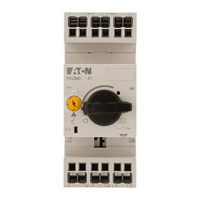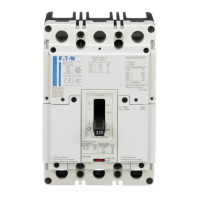10 Industrial Ethernet Communication Adapter Modules (ECAM)
10.2 EtherCAT
PXR Electronic trip unit 01/21 MN012005EN www.eaton.com 125
10.2.3.4 Event logs
A trip event provides historical values for the data objects at the time the
event has occurred. The trip unit classifies the event information in order to
be able to provide a different quantity for each type. The EtherCAT
communication can only access the historical summary, as well as the trip
and event data.
Table 69: Event classification - EtherCAT
A single trip may be registered under multiple event types. For example, a
protective trip may be recorded in the summary log (→ table 70) as well as
in the trip log (→ table 71).
Event logs information is accessed via sub index: 0 and indexes according to
→ tables 70, 71 and 72.
If the event type selection is written to index 213C, the first and last event ID
can be retrieved from instances 213D and 213E, respectively, in order to
determine the range of events that have been stored for the selected event
type. Index 213F is a R/W register for selecting the ID of the event in
question. If the requested event has been recorded by the device, instances
2140 and 2141 will supply both the ID of the previous event and that of the
next event.
If the device has not recorded the event in question, the exception code can
be queried by requesting the Modbus communication status of the ECAM
from the controller via a dedicated industrial protocol object (sub index: 0 and
index 2167).
The date and time at which the requested event occurred are read in log
2142, with the same date and time description as in → table 74, page 129.
This value corresponds to the time at which the historical event occurred.
Log 2143 indicates the data content of the selected event type. This is a
constant value for the three event types supported by the module.
The event data also provide a valid bit for each data object, starting with
index 2144. If bit 0 is set to 1, the initial data will be valid for the current trip
type, bit 1 for the second data object, bit 2 for the third data object, and so
forth.
The number of valid bit registers is calculated as:
(number of data objects - 1)/16.
Event type Quantity of
numbers
stored
Description of the event log
Summary 200 → table 70
Tripping 10 → table 71
Alarms 10 → table 71 and → table 72
→
For more information on the exception codes, see
→ section 10.2.3.11, “Exception codes”, page 132.

